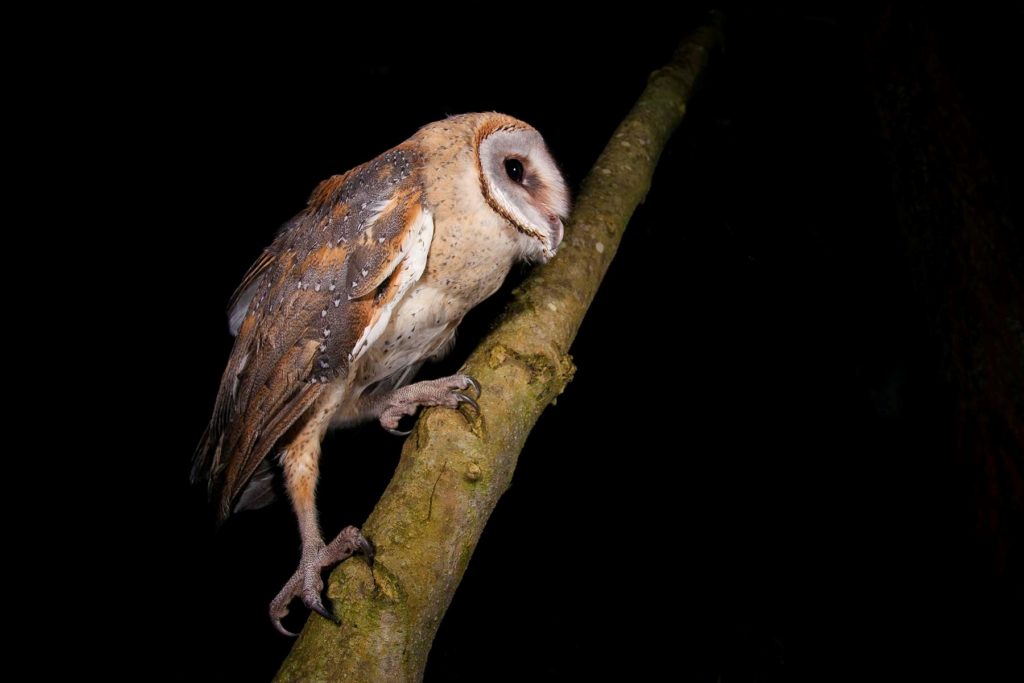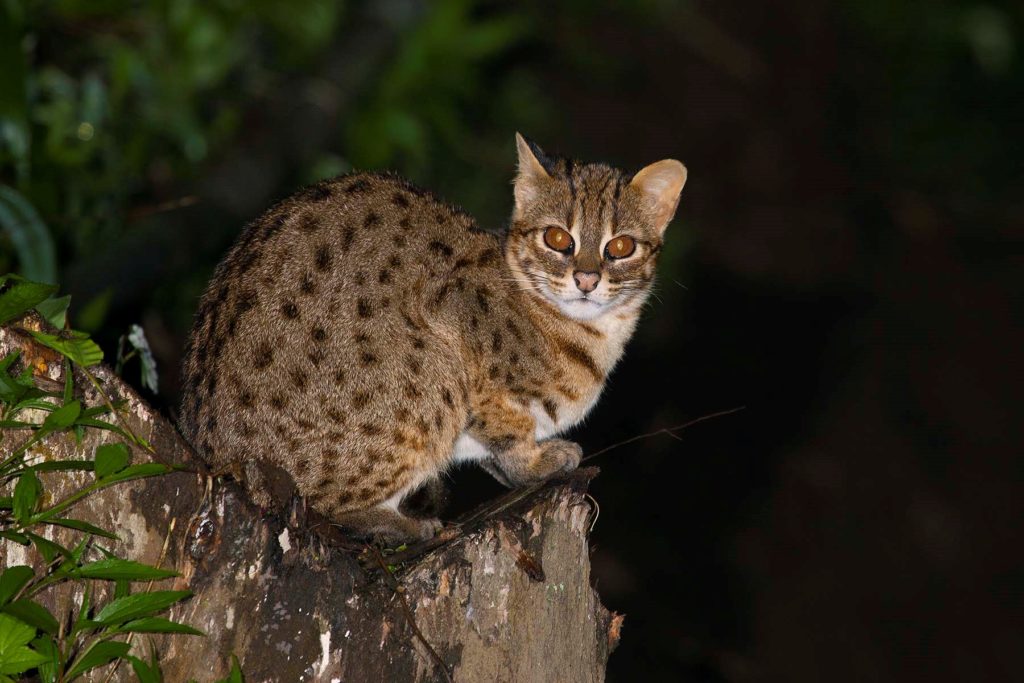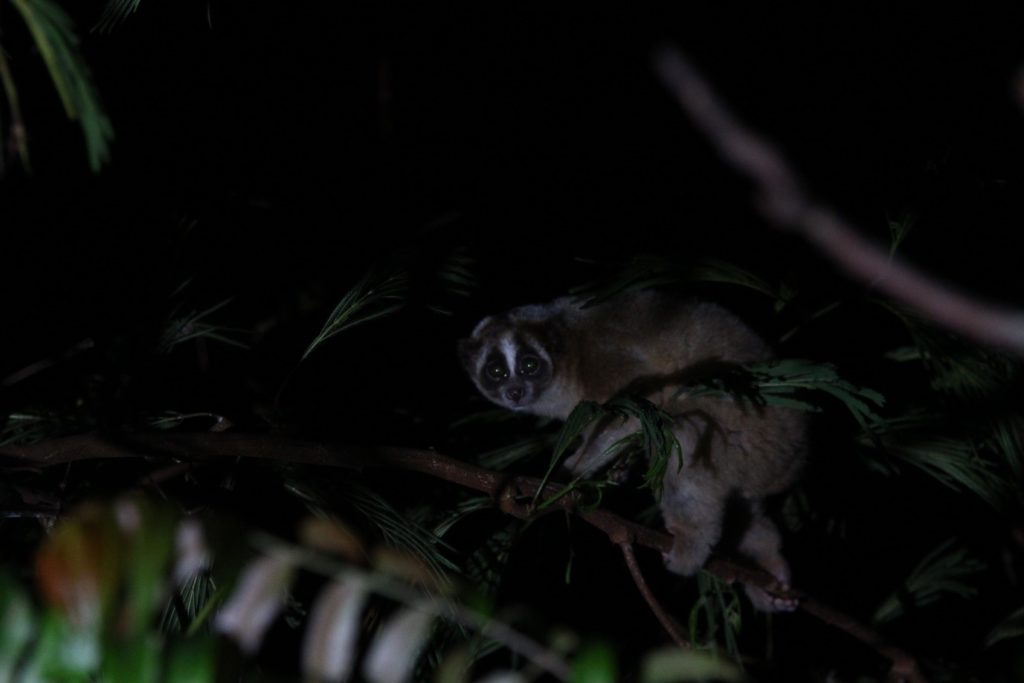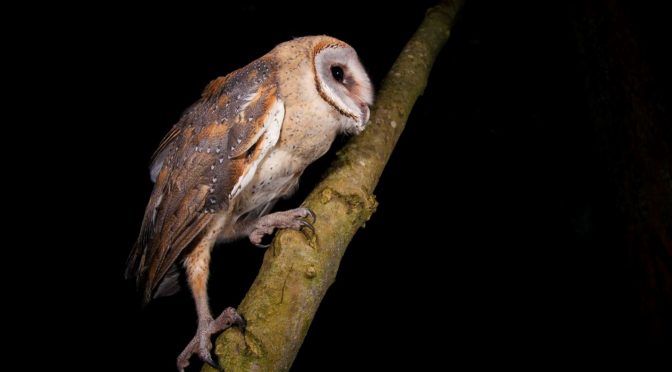While the sun sets and villagers slowly return to their homes for the night, the bustle and noise of human life slowly subsides and is replaced by soft chirps from crickets. A quietening hush falls over the village as people fall to sleep. But life does not slow down, not in a tropical forested area like this, instead the small and unusual nocturnal creatures that call this area their home begin to wake up. The whole world seems a lot quieter in the dark of night, distant motorbike engines and barks of dogs can be heard, but it is peaceful. Taking steps up muddy and rocky pathways in the forest, you begin the see the creatures that would otherwise remain inconspicuous during the day. This is where the magic of night and the excitement of nocturnal work can be found.

Adaptations for living in the dark
Animals which are nocturnal are active during the night and sleep during the day and there can be a number of reasons for this. Some species are nocturnal to avoid the heat of the day, others to avoid predators and some to avoid competition of shared resources1. Many have specialised adaptations which allow them to mate, hunt or feed in the dark. Owl species have specialised eyes that have wide pupils and their rod cell nuclei maximise light collection2. Some animals have specialised hearing with highly manuverable ears, such as cat species like the Leopard cat2. These animals can hear prey or predators which are long distances away. Others, including the slow loris, use scent marking and advanced olfaction for a number of activities including social or antagonistic behaviours3. Scent marking can be used to attract mates, or deter a rival and can also be used for navigating environments4. Without a reliance on light, nocturnal species tend to have their other senses heightened.

Nocturnal slow lorises
At LFP, our radio-collared, wild slow lorises are nocturnal and data collection in the form of behavioural observations is done at night. Slow lorises have advanced olfaction (smell) and specialised vision as adaptations to their nocturnal life. They possess a reflective layer called the tapetum lucidum, which sits behind the retina in the eye, this allows for impressive night vision. It is also an important way for us to find them in the forest as when light hit the eye, it reflects and causes two bright eyes to be seen. As light can be harmful to these delicate night eyes, we use red filtered lights to see them, which does not hurt the individuals. They also have an impressive sense of smell which is linked to their wet nose, a feature retained by strepsirrhine primates. This olfaction, along with behaviours such as scent marking, helps with communication. Male slow lorises can use scent marking to deter male competition, or to attract a female mate5. These features add to the interest of the species and allow us to understand wildlife with an opposite sleep cycle to us. Nocturnal work can be difficult, but seeing the creatures that mate, hunt and hide during the dark and quiet night is endlessly interesting.

Reference list
- Fratt, Kayla 2019, Why are some animals nocturnal?, Earth.com (online)
- National Geographic 2019, Nocturnal animals, explained, National Geographic (online)
- Colquhoun, Ian 2011, A review and interspecific comparison of nocturnal and cathemeral strepsirhine primate olfactory behavioural ecology, International Journal of Zoology, doi: http://dx.doi.org/10.1155/2011/362976
- Lebedev, M et al 2018, Navigation patterns and scent marking: underappreciated contributors to hippocampal and entorhinal spatial representations?, Frontiers in behavioural neuroscience, Vol. 12, no. 98, doi: 10.3389/fnbeh.2018.00098
- The kukang rescue program 2018, Greater slow loris, The kukang rescue program (online)
MONIQUE AHRENS

